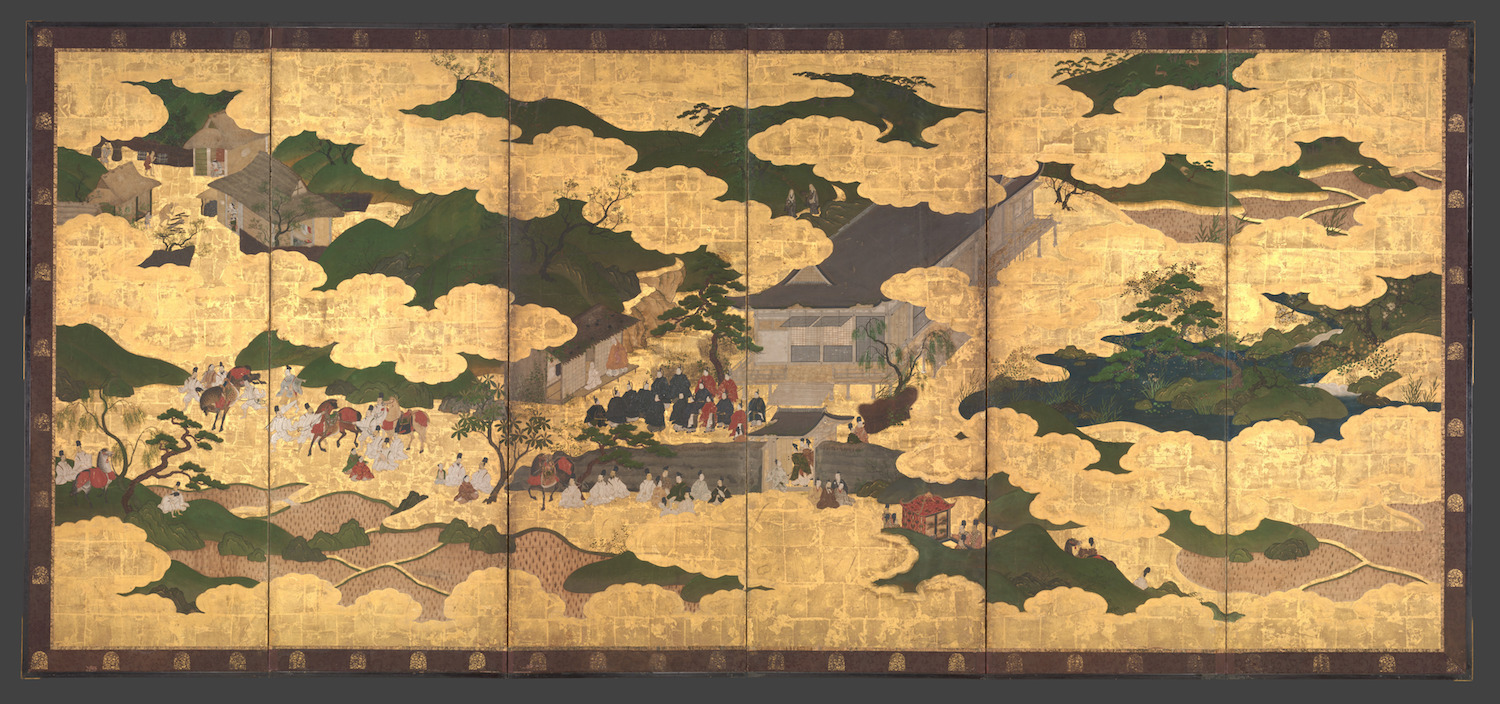Wednesday, October 24, 2018 - 12:00pm
Room 202, Frick Fine Arts Building
"The Origin of Ōhara gokō Paintings"

One of the highlights of the Tale of the Heikeis Ōhara gokō(imperial visit to Ōhara). In this scene―which was thought to be a fiction, but which recent studies show is based on a historical event―Retired Emperor Go-Shirakawa (1127–1192) pays a clandestine visit to a hermitage of his daughter-in-law, Kenreimon’in (1155–1214/1223), who withdrew to the remote village of Ōhara after the Genpei War eliminated her natal family. Folding screens depicting this scene were produced sincethe mid-sixteenth century. Extant screens of this theme in the seventeenth century are paired with another episode of a female protagonist from the Tale of theHeike. Nevertheless, several incoherent features between this pair―in terms of composition for instance―have been pointed out in previous scholarship, suggesting different courses of development for the two themes of paintings.
In this talk, Gunji will discuss the historical process that resulted in Ōhara gokō screens as one of this incoherent pair of depictions of women. Gunji will trace back the pictorialization of Ōhara gokō to its origin as a picture of events (gyōji-e)―a highly aristocratic and prestigious genre of paintings―in which the protagonists were indeed the retired emperor and his associates. This prestigious origin of the Ōhara gokō theme, on the one hand, prevented its iconography from changing for centuries. On the other hand, developments in representations of the Tale of theHeike, and in performing arts in particular, led the former imperial consort to take over the protagonist role in Ōhara gokō paintings, transforming a group portrait of elite men into a pictorialization, paired with another woman, of the virtues, suffering, and prayers of women. This thesis also potentially implies that Ōhara gokō paintings present a case of visual representation of a narrative scene that predates the production of a textual format of the narrative, an extraordinary case that is quite opposite to the conventional process of making pictures based on the texts of tales and narratives.
